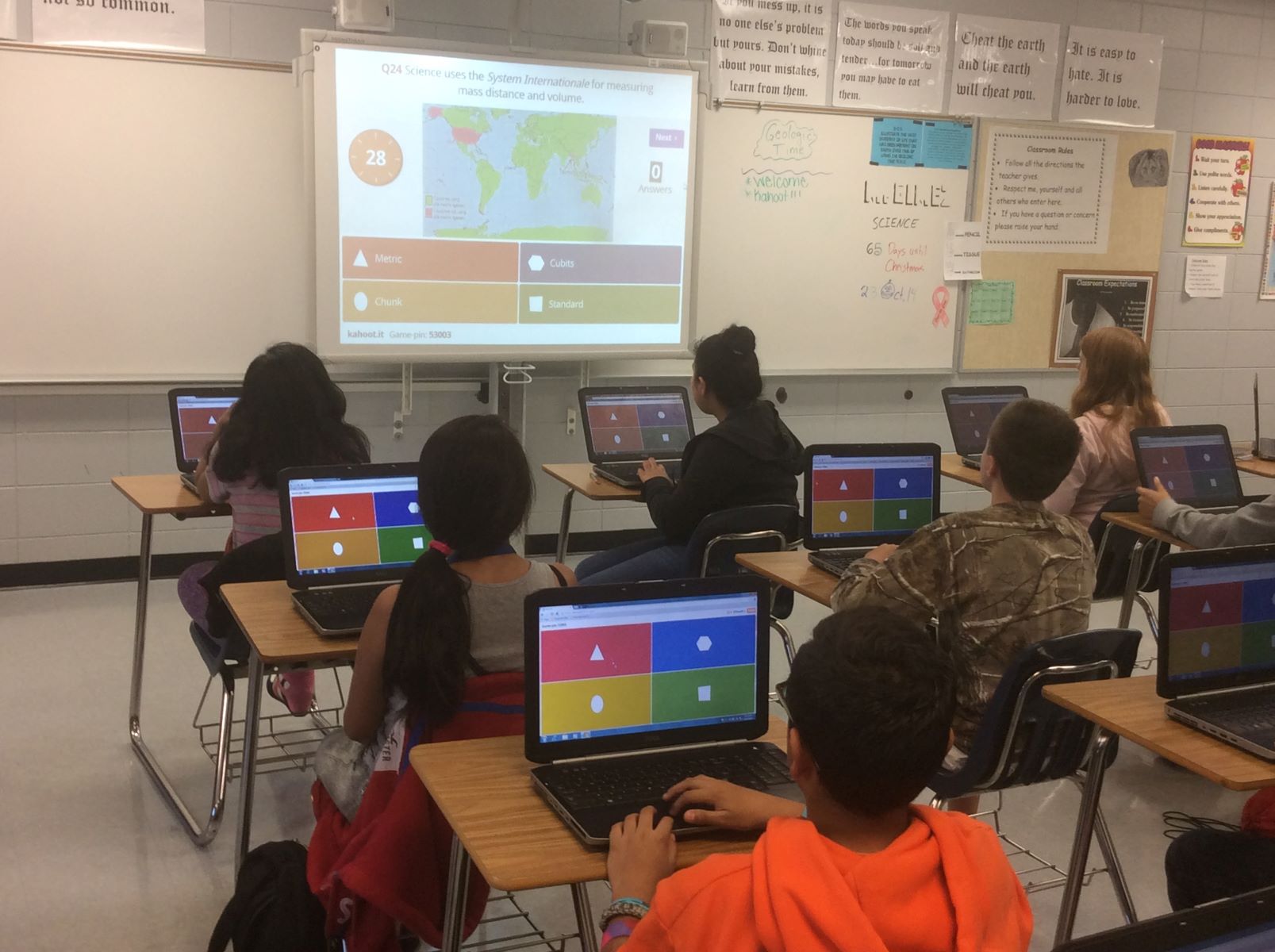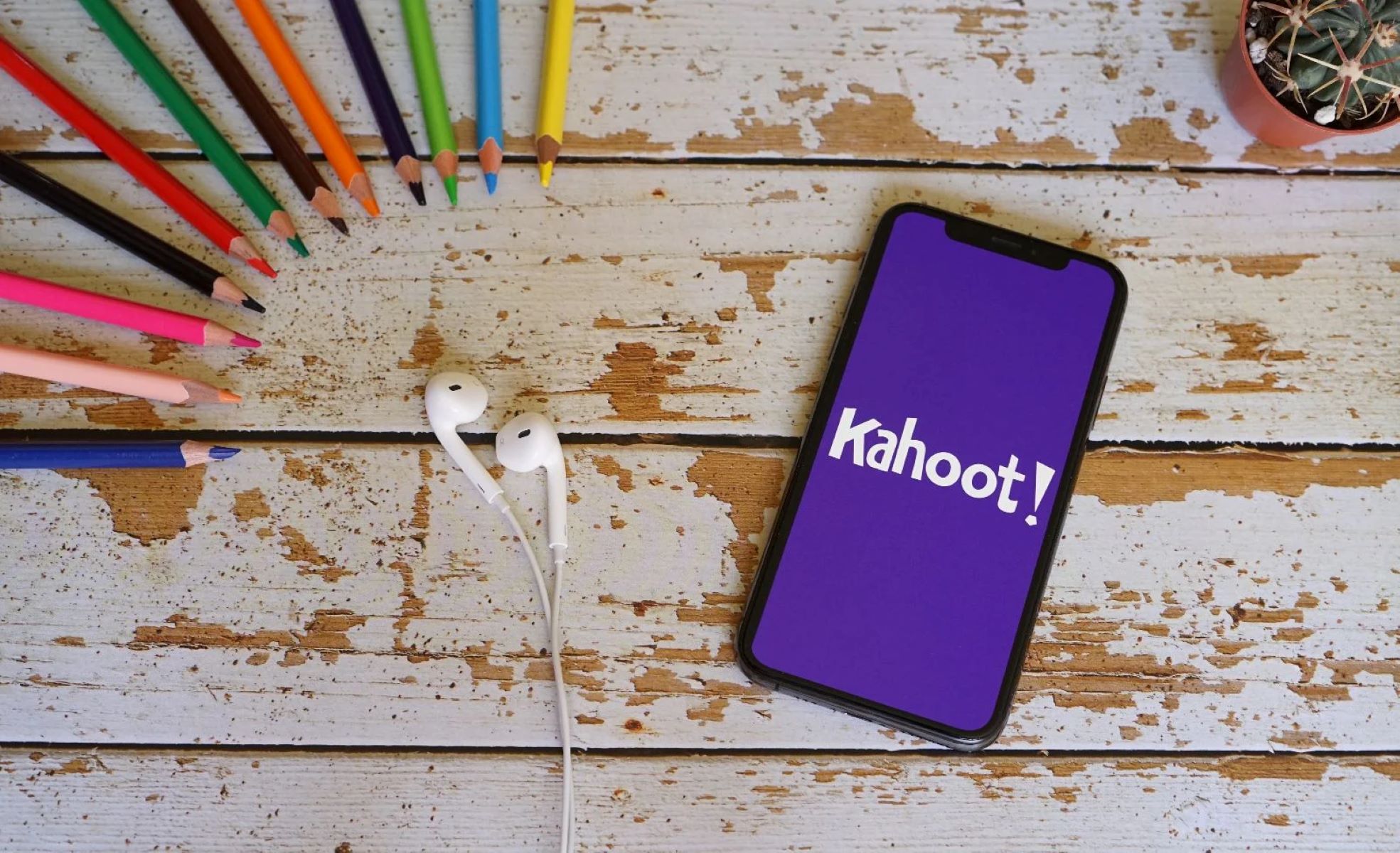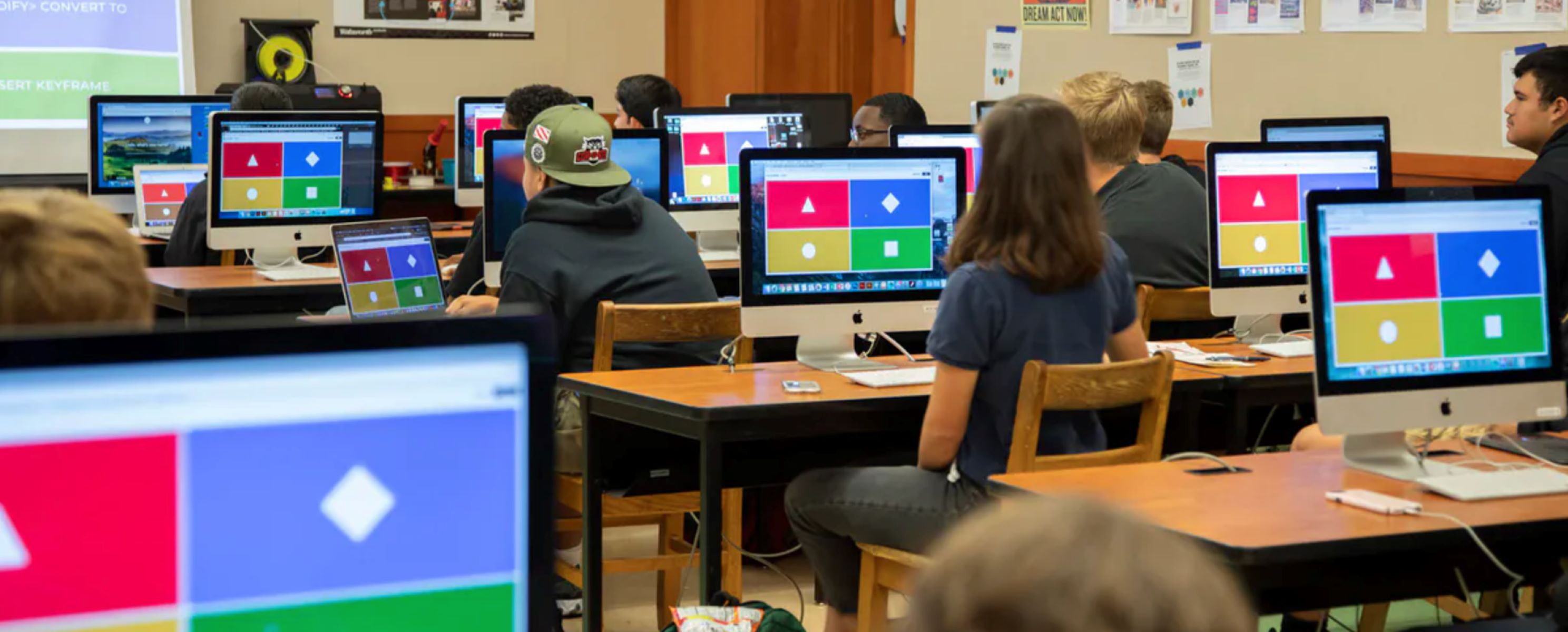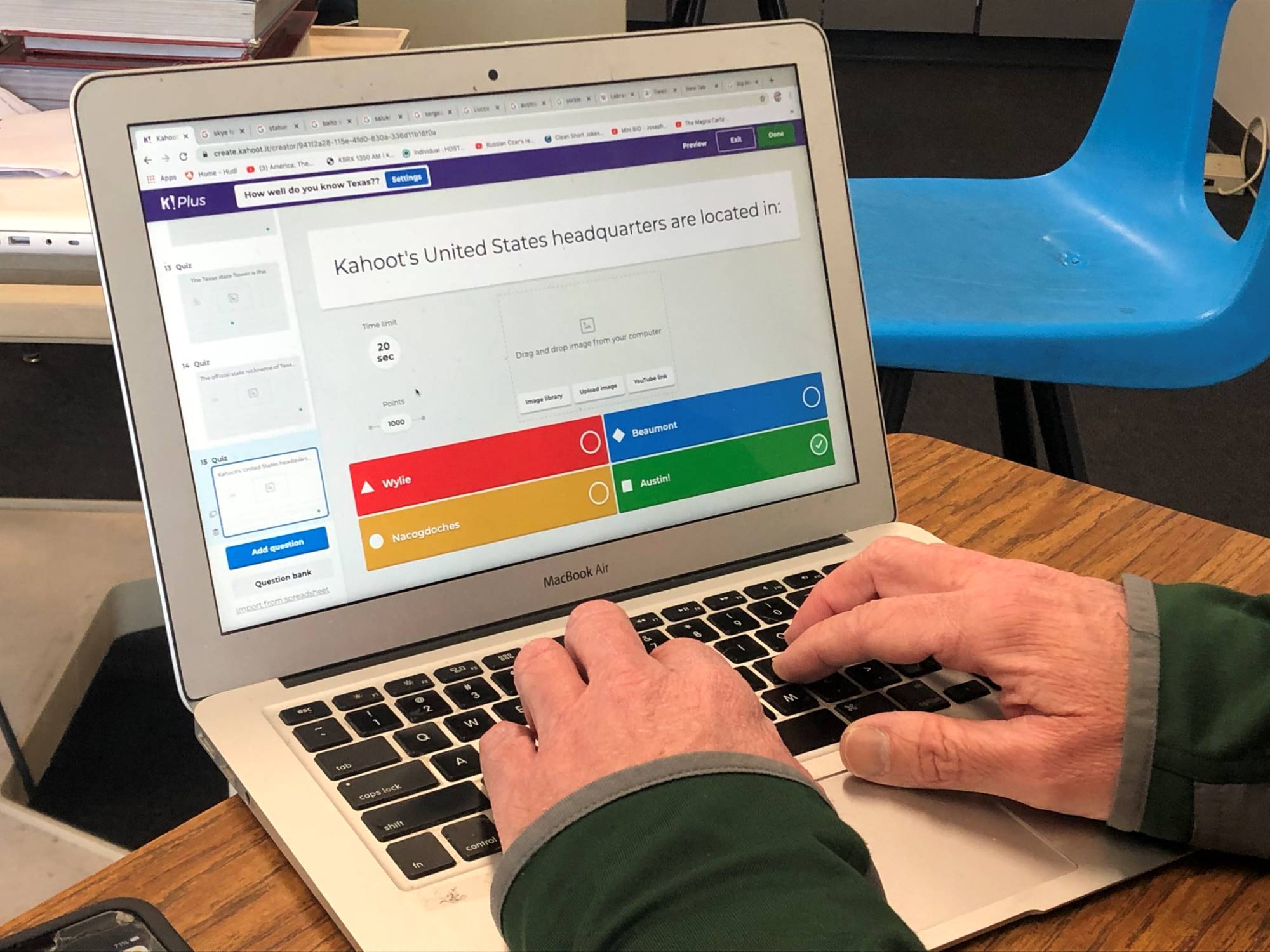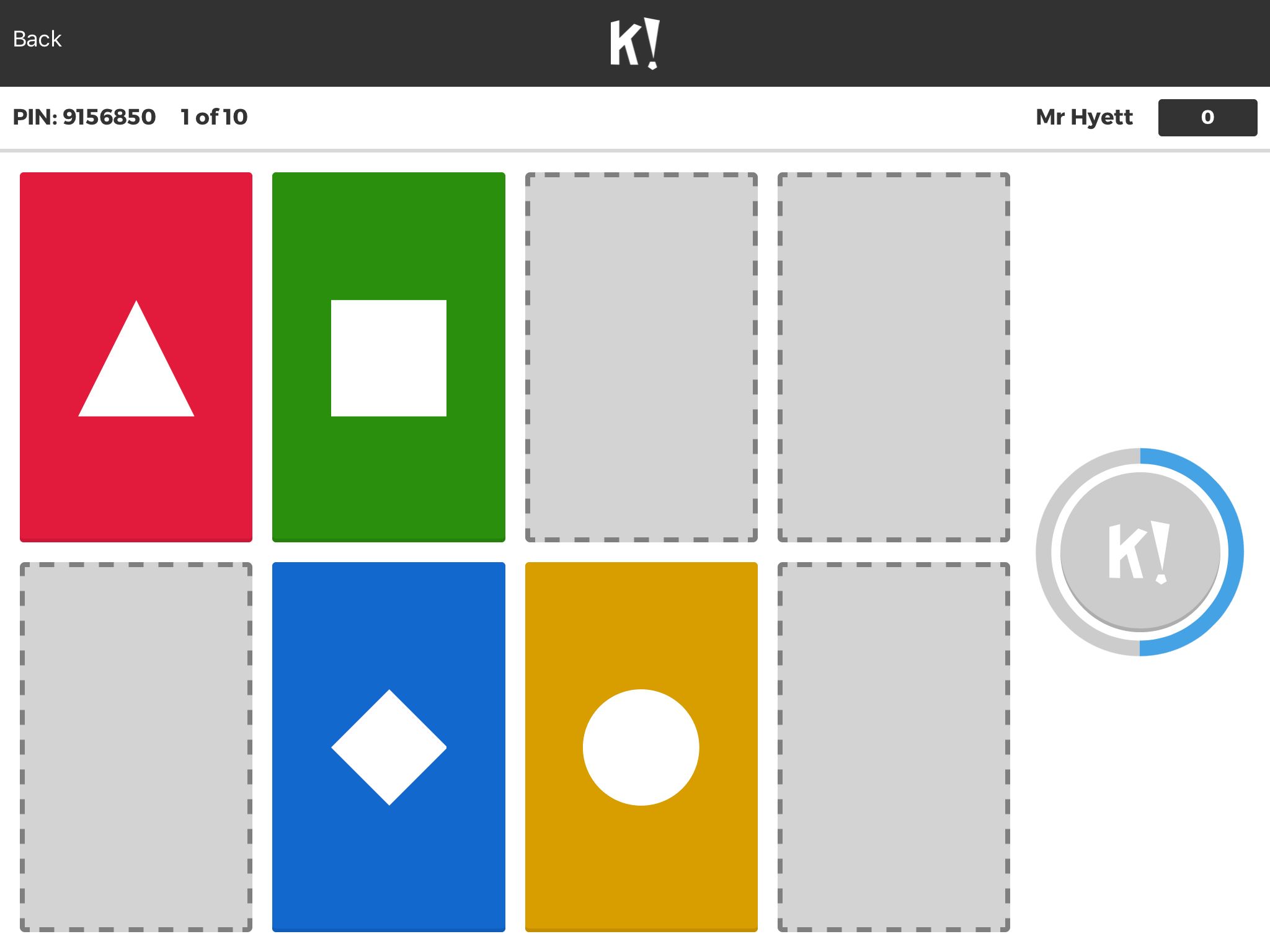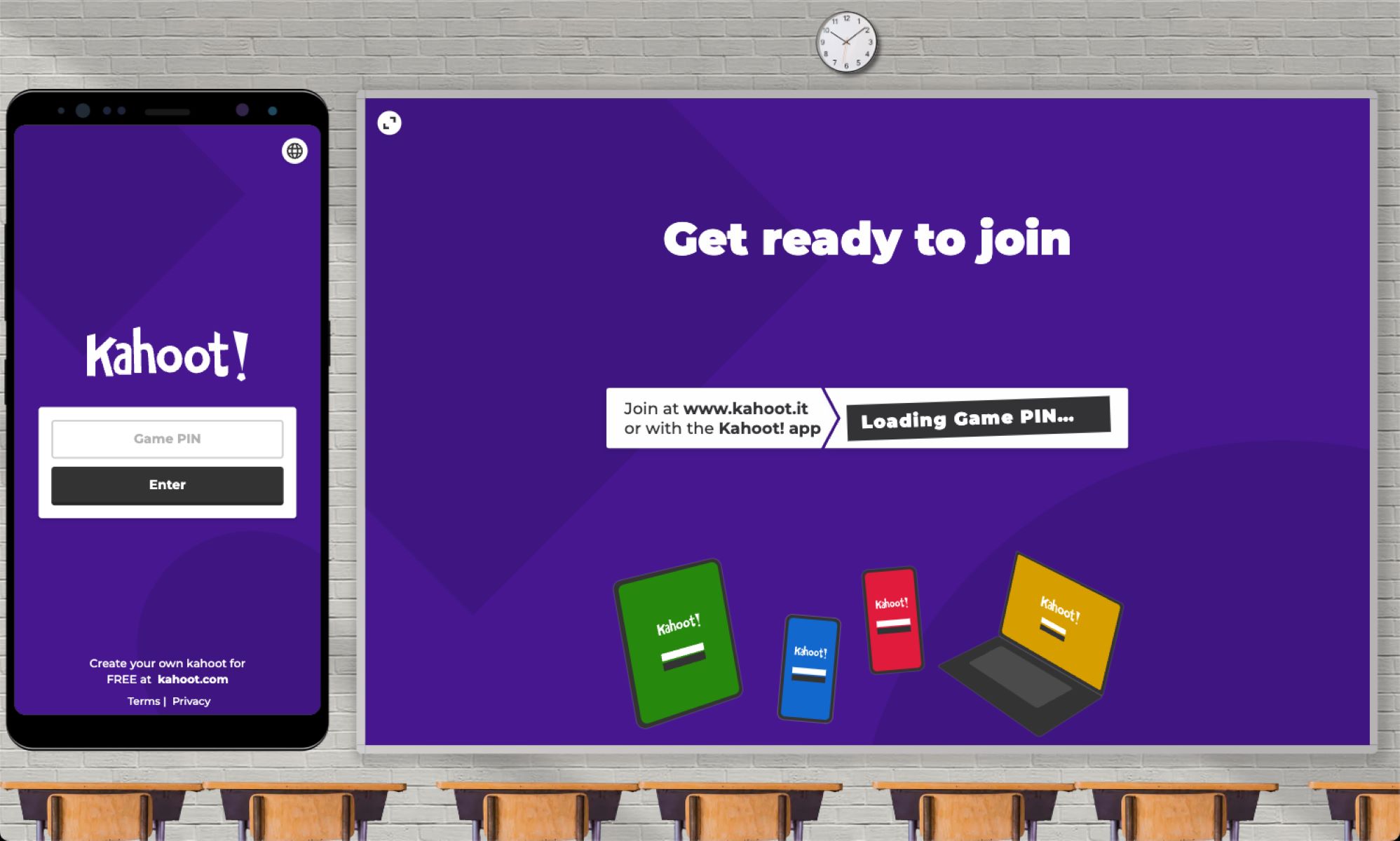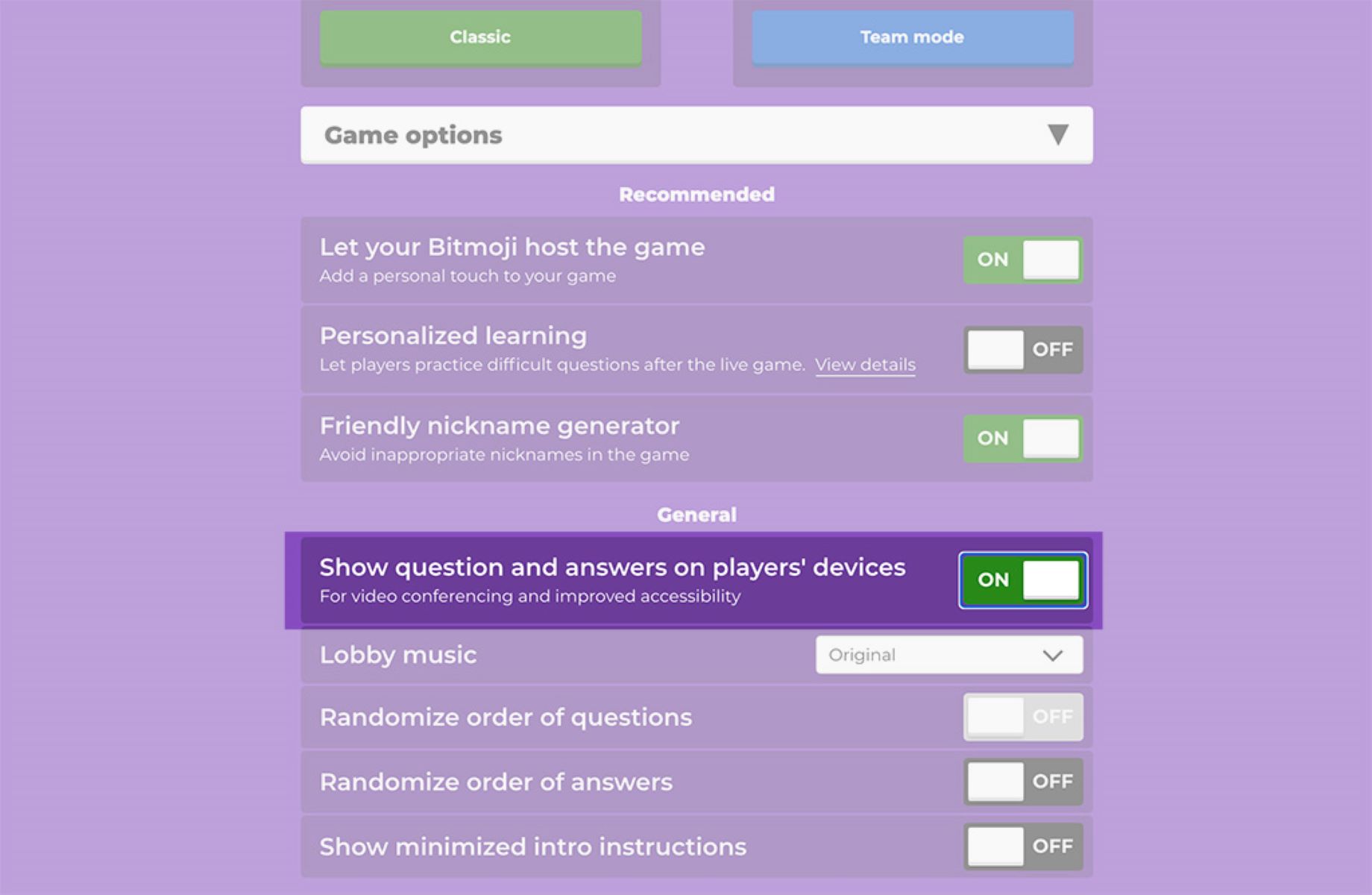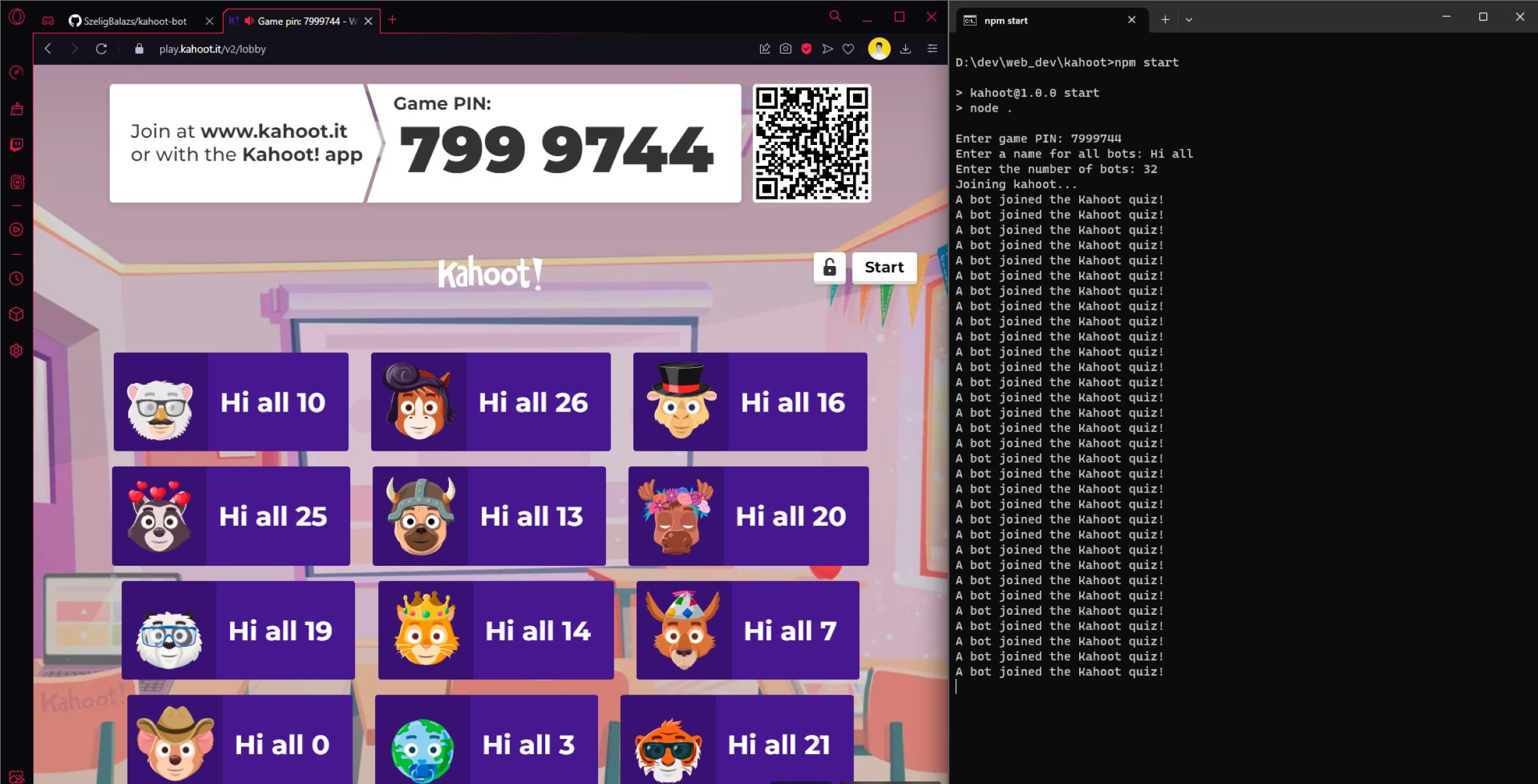Introduction
Welcome to the world of Kahoot, a fun and interactive learning platform that has revolutionized the way students engage with educational content. Developed in 2013, Kahoot has quickly gained popularity among educators and students of all ages, becoming a valuable tool in classrooms worldwide. By combining elements of game-based learning with interactive quizzes, Kahoot offers a unique and effective approach to teaching and learning.
Designed to be user-friendly and accessible, Kahoot allows students to participate in quizzes, surveys, and discussions using any internet-connected device. Whether in a physical classroom or participating in remote learning, students can join Kahoot sessions from their smartphones, tablets, or computers, making it a versatile and inclusive learning tool.
Through its gamified approach, Kahoot transforms traditional learning into an exciting and engaging experience. Students are motivated to actively participate, as they strive to earn points, climb leaderboards, and compete with their peers. This not only enhances their motivation and interest but also fosters healthy competition and teamwork.
In this article, we will explore the many benefits of using Kahoot in the classroom. From its ability to engage students, encourage active learning, and make education enjoyable, to fostering collaboration, critical thinking, and problem-solving skills, Kahoot has proven to be a valuable asset for both teachers and students.
So, let’s dive into the world of Kahoot and discover why it is such a beloved platform among educators and students alike.
Engages Students
One of the key reasons why Kahoot is so effective in the classroom is its ability to actively engage students in the learning process. Traditional teaching methods often rely on passive learning, where students may become disengaged or lose interest. However, Kahoot breaks this mold by offering a dynamic and interactive learning environment.
With its game-based format, Kahoot turns learning into a fun and captivating experience. The platform presents content in the form of quizzes, allowing students to actively participate and compete with their classmates. The element of competition adds excitement and motivation, encouraging students to pay attention and strive for better results.
Furthermore, Kahoot incorporates multimedia elements such as images, videos, and music, making the learning experience more visually stimulating. This multimedia-rich approach helps to capture students’ attention and retain information more effectively.
Kahoot also offers various question formats, including multiple-choice, true or false, and open-ended questions. This variety keeps students actively involved, as they need to think critically and engage in problem-solving. By fostering such active participation, Kahoot ensures that students remain focused and invested in their learning.
Moreover, Kahoot provides immediate feedback after every question, allowing students to understand their performance in real-time. The instant feedback informs them of their strengths and areas for improvement, enabling them to enhance their understanding and make adjustments accordingly. This feedback loop enhances the learning process, as students can correct misconceptions and reinforce their knowledge.
Overall, Kahoot’s engaging nature promotes active participation, enhances focus, and provides immediate feedback. These elements contribute to a more effective and enjoyable learning experience, ensuring that students remain motivated and invested in their education.
Encourages Active Learning
Kahoot is designed to promote active learning, where students actively engage with the content and take a hands-on approach to their education. Unlike traditional teaching methods that often involve passive listening or reading, Kahoot encourages students to become active participants in their learning journey.
One of the ways Kahoot promotes active learning is through its interactive quizzes and discussions. Students are not just passive recipients of information; they have the opportunity to answer questions, make choices, and actively contribute to the learning process. This level of engagement increases their retention and understanding of the subject matter.
Furthermore, Kahoot’s collaborative features enable students to work together and learn from one another. In team mode, students are grouped into teams and must collaborate to answer questions correctly. This fosters teamwork, communication skills, and a sense of shared responsibility. Students learn from their peers and benefit from diverse perspectives, promoting a deeper understanding of the material.
Kahoot also allows for self-paced learning. Students can complete quizzes and activities at their own speed, enabling them to focus on their individual learning needs. This flexibility ensures that each student can engage with the content in a way that suits their learning style and pace.
In addition, Kahoot supports differentiation and adaptation for diverse learners. Teachers can create quizzes with varying difficulty levels or provide different sets of questions for students with different learning needs. This personalized approach ensures that all students can actively participate and engage with the material at their own level.
By encouraging active learning, Kahoot empowers students to take charge of their education, think critically, and apply their knowledge. Through collaboration, personalized learning, and interactive quizzes, Kahoot creates a stimulating learning environment where students are actively involved in their own learning process.
Makes Learning Fun
Gone are the days when learning was a monotonous and boring task. Thanks to Kahoot, learning has become an exciting and enjoyable experience for students. With its game-based approach, Kahoot effectively incorporates fun and entertainment into the learning process.
One of the main reasons why Kahoot makes learning fun is its interactive and engaging interface. The platform utilizes vibrant colors, engaging visuals, and captivating animations, creating an immersive and visually appealing experience. This visual appeal not only enhances the overall aesthetic of the quizzes but also captures students’ attention and keeps them engaged throughout the session.
Kahoot also offers a wide range of customizable features that allow teachers to design quizzes that align with the interests and preferences of their students. From choosing relevant and relatable topics to adding images and videos that resonate with students, teachers can tailor the content to make it more engaging and enjoyable.
The competitive aspect of Kahoot further adds to the excitement and fun of learning. Students can participate individually or form teams and compete against one another in real-time quizzes. This gamified approach creates a sense of enthusiasm and motivation as students strive to earn points, climb the leaderboard, and outperform their classmates.
Furthermore, Kahoot offers various game modes, including the classic quiz format, jumble, and discussion-based activities. These different options keep the learning experience fresh and dynamic, preventing students from becoming bored or disengaged. It allows for variety and adaptability, ensuring that each Kahoot session is unique and enjoyable.
Moreover, Kahoot’s integration of music and sound effects enhances the overall experience. Catchy tunes, playful jingles, and sound effects add an extra layer of fun and excitement to the quizzes, and they create a festive and enjoyable atmosphere in the classroom or remote learning environment.
By making learning a fun and enjoyable experience, Kahoot not only keeps students engaged and motivated but also helps to create positive associations with education. Students are more likely to retain information and develop a love for learning when they find it entertaining and enjoyable.
Builds Collaboration and Teamwork Skills
Kahoot goes beyond individual learning by promoting collaboration and teamwork among students. Through its collaborative features, the platform encourages students to work together, communicate effectively, and develop essential collaboration and teamwork skills.
One of the key collaborative features of Kahoot is the team mode. In team mode, students are divided into groups and work together to answer questions. This fosters a sense of shared responsibility and encourages students to collaborate, discuss, and debate their answers. By working as a team, students learn how to communicate and listen to different perspectives, helping them develop effective teamwork skills.
Kahoot also offers a discussion feature, enabling students to share their thoughts, opinions, and insights on a particular topic. This encourages active participation, critical thinking, and respectful communication. Students learn to express their ideas, listen attentively to their peers, and engage in meaningful discussions, all of which are crucial teamwork skills.
Moreover, Kahoot promotes healthy competition among teams, creating a supportive yet competitive environment. This competitive aspect encourages students to work together, strategize, and share knowledge and ideas to outperform other teams. Collaboration becomes essential to succeed in Kahoot quizzes, fostering a spirit of teamwork and cooperation.
In addition, Kahoot allows students to create their own quizzes and challenges, which they can share with their classmates. This collaborative approach encourages students to take on the role of both a learner and a teacher, fostering peer-to-peer learning and strengthening collaboration skills.
Furthermore, Kahoot sessions can be conducted in group settings, both in-person and online. Whether in the classroom or during virtual sessions, students have the opportunity to collaborate and work together to complete quizzes and solve problems. This simulates real-world teamwork scenarios and helps students develop the skills necessary for effective collaboration in various settings.
By fostering collaboration and teamwork skills, Kahoot prepares students for the challenges and demands of the modern world. Through group activities, discussions, and healthy competition, students learn to communicate effectively, rely on each other’s strengths, and work collaboratively to achieve common goals.
Provides Instant Feedback
One of the many advantages of using Kahoot in the classroom is its ability to provide instant feedback to students. Unlike traditional assessment methods, where students have to wait for their work to be graded, Kahoot delivers immediate feedback after each question, enabling students to assess their understanding in real-time.
With Kahoot, students receive instant feedback on whether their answer is correct or incorrect. This immediate response allows them to gauge their comprehension and identify any misconceptions they may have. Knowing the right answer right away helps students correct their understanding and reinforces the correct information in their minds.
In addition to correctness, Kahoot also provides detailed explanations for the correct answer. This feature allows students to understand the reasoning behind the correct response, enhancing their understanding of the topic. Students not only learn what the correct answer is but also why it is the correct choice, promoting deeper learning and critical thinking skills.
The immediate feedback feature in Kahoot promotes an active learning process. Students can quickly adjust their thinking, refine their knowledge, and make connections between concepts based on the feedback they receive. It creates a continuous feedback loop that leads to improved learning outcomes.
Furthermore, Kahoot’s feedback feature encourages self-reflection and metacognition. As students receive instant feedback, they can reflect on their performance, evaluate their strengths and weaknesses, and identify areas that require further review or practice. This level of self-assessment and reflection fosters a sense of ownership over their learning journey.
Teachers also benefit from the instant feedback feature of Kahoot. They can monitor the progress of their students in real-time, gaining insights into their understanding of the material. This allows teachers to identify areas of the curriculum that need further instruction or revision and adapt their teaching accordingly.
Overall, the instant feedback provided by Kahoot enables students to assess their understanding, correct misconceptions, and engage in metacognitive reflection. It empowers students to take control of their learning and make immediate adjustments to deepen their understanding of the subject matter.
Incorporates Game-based Learning
Kahoot stands out from traditional learning methods by incorporating game-based learning into the classroom. By infusing elements of play and competition, Kahoot creates a dynamic and engaging learning environment that captivates students and enhances their educational experience.
Game-based learning in Kahoot transforms the learning process into an enjoyable and interactive experience. Through quizzes, challenges, and discussions, students actively participate in the game-like activities, fostering a sense of excitement and motivation.
One of the key aspects of game-based learning in Kahoot is the element of competition. Students compete against their peers or teams in real-time quizzes, striving to earn points and climb the leaderboard. This competitive nature adds a level of excitement and engagement that motivates students to put their best effort into answering questions correctly and quickly.
Furthermore, Kahoot incorporates time limitations for each question, adding an element of challenge and urgency. Students need to think critically and make quick decisions, promoting fast thinking and the ability to prioritize information. This time pressure mimics real-life situations where quick decision-making is often required, preparing students for future challenges.
The game-based approach in Kahoot also promotes a growth mindset. Students learn that making mistakes is part of the learning process and that they can learn from them. Feedback provided after each question helps students identify areas for improvement, encouraging them to try again and continuously strive for better results.
In addition to quizzes, Kahoot offers other game formats such as jumble and discussions. In jumble, students need to arrange answers in the correct order, challenging their critical thinking and problem-solving skills. Discussions allow students to engage in deeper conversations and share their ideas and perspectives, promoting collaborative and critical thinking.
Game-based learning in Kahoot not only makes the learning process enjoyable but also enhances student engagement, memory retention, and information recall. The gamified environment creates a positive and motivating atmosphere that encourages students to actively participate and learn.
Moreover, game-based learning taps into students’ natural inclination for play and competition, increasing their intrinsic motivation to learn. It creates a positive association with education, transforming it into a rewarding and enjoyable experience.
By incorporating game-based learning, Kahoot revolutionizes the traditional classroom and provides a fresh and innovative approach to education that is both effective and fun.
Increases Motivation and Interest
Kahoot is not only an educational tool but also a motivation booster. By incorporating elements of gamification and interactivity, Kahoot increases student motivation and interest in learning.
One of the factors that increases motivation is the competitive aspect of Kahoot. Students are naturally inclined to engage in friendly competition, and Kahoot capitalizes on this by allowing them to compete against their peers. The thrill of earning points, climbing the leaderboard, and outperforming others motivates students to actively participate and put forth their best effort.
Kahoot also creates a sense of excitement and anticipation. The interactive nature of the platform, with its vibrant visuals and engaging questions, captures students’ attention and ignites their curiosity. Each question becomes a mini-challenge, motivating students to think critically and apply their knowledge.
Furthermore, Kahoot’s gamified approach transforms mundane learning tasks into enjoyable experiences. Students no longer view studying as a chore but as an opportunity for fun and engagement. This shift in mindset promotes intrinsic motivation, as students are driven by their own interest and enjoyment of the learning process.
Kahoot’s immediate feedback feature is another factor that boosts motivation. Students receive instant feedback after each question, allowing them to assess their performance in real-time. This feedback helps students gauge their understanding, identify areas for improvement, and celebrate their successes. The timely feedback reinforces their learning and encourages them to continue striving for better results.
Moreover, Kahoot allows for personalization and individual progress tracking. Students can set personal goals, track their progress, and see their improvement over time. This sense of personal growth and achievement further enhances their motivation and keeps them engaged in their learning journey.
Incorporating Kahoot into the classroom also brings an element of novelty and excitement to the learning environment. Students are eager to participate in Kahoot sessions, looking forward to the interactive quizzes and the engaging atmosphere it creates. This increased excitement leads to higher levels of engagement and motivation.
Ultimately, increased motivation and interest in learning leads to improved academic performance. Students who are motivated and engaged are more likely to actively participate, retain information, and achieve better learning outcomes. Kahoot’s gamified approach provides the means to cultivate this motivation and interest, creating a positive and dynamic learning experience for students.
Enhances Retention and Understanding
One of the significant benefits of using Kahoot in the classroom is its ability to enhance retention and understanding of the material being taught. Through its interactive and engaging format, Kahoot promotes effective learning strategies that aid in long-term retention and deep understanding of the subject matter.
Kahoot’s game-based approach helps students retain information by utilizing repetition and reinforcement. The engaging quizzes and activities allow students to review and practice the content multiple times. Repetition strengthens neural connections and improves memory consolidation, leading to better retention of the learned material.
Furthermore, Kahoot’s immediate feedback feature plays a vital role in enhancing understanding. Students receive instant feedback on their responses, enabling them to identify and correct any misconceptions. This instant feedback promotes metacognition, as students assess their understanding and make necessary adjustments to their thinking. By addressing misconceptions in real-time, Kahoot helps students build a solid foundation of accurate knowledge.
Moreover, Kahoot’s incorporation of multimedia elements such as images, videos, and audio enhances understanding. These visual and auditory aids help students make connections, visualize concepts, and reinforce their learning. By engaging multiple senses, Kahoot provides a more comprehensive learning experience and better supports information retention.
Kahoot also encourages active learning strategies that contribute to a deeper understanding of the material. By requiring students to actively participate, think critically, and make choices, Kahoot promotes higher-order thinking skills. This active engagement facilitates a deeper level of processing, enabling students to grasp complex concepts and develop a deeper understanding of the subject matter.
Additionally, Kahoot promotes the retrieval practice, a learning strategy known to enhance long-term retention. Through the repeated recall of information during quizzes and discussions, students reinforce their memory of the learned material. Retrieval practice strengthens memory retrieval pathways and helps transfer knowledge from short-term to long-term memory.
By actively engaging students, providing immediate feedback, utilizing multimedia elements, and promoting active learning strategies, Kahoot creates a conducive environment for enhancing retention and understanding. Students are more likely to remember and comprehend the material taught through the interactive and engaging nature of the platform.
Promotes Critical Thinking and Problem-Solving
Kahoot plays a significant role in promoting critical thinking and problem-solving skills among students. By engaging in interactive quizzes and challenges, students are encouraged to analyze, evaluate, and apply their knowledge in solving problems and making informed decisions.
One way Kahoot promotes critical thinking is through the inclusion of higher-order thinking questions. The platform goes beyond simple recall and asks students to think critically, analyze information, and make connections. The diverse question formats, such as multiple-choice, true or false, and open-ended, require students to evaluate options, consider evidence, and justify their answers.
In addition, Kahoot’s game-like environment encourages students to think quickly and make decisions under time pressure. This time constraint challenges students to think on their feet, prioritize information, and make sound judgments. By engaging in these rapid decision-making scenarios, students develop their problem-solving skills and enhance their ability to think critically under pressure.
Kahoot also fosters problem-solving skills by presenting students with complex questions and scenarios. Students must analyze the provided information, synthesize knowledge from different sources, and employ critical thinking strategies to arrive at a solution. The immersive nature of Kahoot’s activities promotes a holistic and analytical approach to problem-solving, allowing students to apply their knowledge to real-life situations.
Furthermore, Kahoot’s collaborative features stimulate critical thinking and problem-solving skills through group discussions and teamwork. In team mode, students work together to answer questions, encouraging them to share ideas, consider different perspectives, and collectively approach problem-solving. This collaborative environment fosters critical thinking, as students learn from each other and constructively challenge ideas.
Kahoot’s immediate feedback feature also contributes to the development of critical thinking skills. Through the feedback provided after each question, students can reflect on their thought processes, identify errors in reasoning, and refine their problem-solving approaches. By analyzing the feedback, students learn to evaluate their own thinking and make adjustments to improve their problem-solving strategies.
By promoting critical thinking and problem-solving skills, Kahoot equips students with the essential tools for academic success and future careers. These skills enable students to analyze complex situations, think critically, evaluate information, and make informed decisions. The interactive and engaging nature of Kahoot’s activities creates a platform that nurtures critical thinking and problem-solving abilities in a fun and enjoyable way.
Assists in Differentiation and Adaptation
Kahoot offers valuable support for differentiation and adaptation in the classroom, allowing teachers to meet the diverse needs of their students. With its customizable features and flexible design, Kahoot assists in tailoring instruction to individual learning styles, abilities, and interests.
One of the ways Kahoot supports differentiation is through the ability to create quizzes with varying difficulty levels. Teachers can modify the complexity of questions or add additional challenges to cater to the diverse skill levels of their students. This ensures that each student is appropriately challenged and engaged in the learning process.
Furthermore, Kahoot allows teachers to adapt quizzes and activities to align with the learning objectives of their specific curriculum or lesson plan. Teachers can choose relevant topics, include specific content, and align the quizzes with the specific standards or learning outcomes they are targeting. This adaptability ensures that Kahoot seamlessly fits into existing instructional strategies.
Kahoot also provides opportunities for individualized learning. Teachers can assign specific quizzes or challenges to individual students based on their needs or interests. This personalized approach allows students to focus on areas where they need additional practice or exploration, promoting self-directed learning and supporting individual growth.
Moreover, Kahoot’s team mode facilitates collaboration and differentiation simultaneously. By grouping students into teams, teachers can create mixed-ability groups where stronger students can support and mentor their peers. This collaborative environment allows for differentiated instruction within the team, as students learn from each other and leverage their individual strengths.
In addition, Kahoot enables teachers to adapt their instruction in real-time based on the feedback received during a session. The immediate feedback provided after each question allows teachers to assess students’ understanding and quickly identify areas where additional instruction or clarification is needed. This adaptive approach ensures that students receive targeted support and that instruction is tailored to their specific needs.
By assisting in differentiation and adaptation, Kahoot empowers teachers to cater to the diverse learning needs within their classrooms. Whether it is modifying difficulty levels, personalizing content, or promoting collaboration, Kahoot helps create an inclusive learning environment where all students can thrive and reach their full potential.
Supports Formative Assessment
Kahoot is a powerful tool for supporting formative assessment practices in the classroom. With its interactive quizzes, immediate feedback, and data tracking features, Kahoot empowers teachers to gather real-time insights into student understanding and tailor their instruction accordingly.
Formative assessment, which focuses on providing feedback and monitoring student progress throughout the learning process, is seamlessly integrated into Kahoot. Each question answered during a Kahoot session provides valuable information about student understanding and misconceptions.
Kahoot’s immediate feedback feature allows students to receive instant feedback on their responses. Teachers can review this feedback to gauge student comprehension, identify areas of strength or weakness, and make instructional decisions based on their students’ needs.
Kahoot also offers a variety of data tracking features that provide valuable insights into student performance. Teachers can access detailed reports and analytics that highlight individual and overall class progress. This data helps them identify trends, monitor growth, and adjust instruction as necessary.
Teachers can also use Kahoot to inform their instructional planning for future lessons. By reviewing student responses and understanding their strengths and areas that require further attention, teachers can adapt their teaching strategies and tailor their future instruction to better meet the needs of their students.
Additionally, Kahoot’s data tracking features allow teachers to monitor student engagement and participation. They can see who is actively participating in Kahoot activities, how often they are engaged, and where they may need additional support.
Formative assessment is made even more effective with Kahoot’s collaborative features. Teachers can use Kahoot to foster discussions, group activities, and peer-to-peer learning. These opportunities for collaboration provide additional insights into student understanding and allow for informal assessment of their ability to communicate and apply their knowledge.
Kahoot’s formative assessment capabilities not only benefit teachers but also empower students to take ownership of their learning. The immediate feedback they receive during Kahoot activities helps students reflect on their understanding, identify areas for growth, and make adjustments to improve their performance.
By supporting formative assessment practices, Kahoot ensures that both teachers and students have a clear understanding of student progress and areas that require further attention. This data-driven approach to assessment enhances the learning process, fosters personalized instruction, and promotes student growth and achievement.
Enhances Digital Literacy Skills
Kahoot plays a valuable role in enhancing digital literacy skills among students. As a digital learning platform, Kahoot offers an interactive and engaging environment that allows students to develop and strengthen their digital literacy skills.
One of the ways Kahoot enhances digital literacy skills is by promoting digital fluency. Students must navigate the Kahoot platform, interact with various features, and utilize different multimedia elements. This hands-on experience increases their comfort and familiarity with digital tools, improving their overall digital fluency.
Kahoot also encourages students to practice responsible and ethical digital behavior. When participating in Kahoot activities, students learn about the importance of respecting intellectual property rights and properly citing sources when incorporating external content into their own work. By modeling and reinforcing proper digital etiquette, Kahoot helps instill good digital citizenship habits in students.
Additionally, Kahoot exposes students to a range of digital resources by incorporating multimedia elements such as images, videos, and audio. Through these resources, students learn how to locate, evaluate, and utilize digital content effectively and responsibly. They develop skills in information literacy, learning to critically analyze and verify the credibility of online sources.
Kahoot’s collaborative features, such as team mode, also foster digital literacy skills. Students learn to communicate and collaborate effectively in online environments, developing skills in online communication, virtual teamwork, and netiquette. They learn how to effectively work with their peers in a digital space, building important skills for future collaboration in the digital age.
Moreover, Kahoot encourages students to think critically about digital media and engage in media literacy. Through the interactive quizzes and discussions, students learn to critically evaluate information presented to them, distinguishing between reliable and unreliable sources. They develop skills in media literacy, enabling them to navigate the vast amount of digital content and make informed judgments about its accuracy and validity.
By fostering digital literacy skills, Kahoot prepares students for the digital world they will encounter outside of the classroom. These skills are vital for success in today’s technology-driven society, allowing students to use digital tools confidently, responsibly, and effectively in their academic and personal lives.
Boosts Confidence and Self-esteem
Kahoot is a powerful tool that can significantly boost confidence and self-esteem among students. Its interactive and engaging nature creates a supportive environment where students can showcase their knowledge, celebrate their successes, and build their sense of self-worth.
One of the ways Kahoot boosts confidence is through its competitive aspect. By participating in quizzes and challenges, students have the opportunity to earn points and climb the leaderboard. As they succeed and outperform their peers, students gain a sense of accomplishment and validation, leading to increased confidence in their abilities.
Kahoot’s immediate feedback feature further enhances confidence. After each question, students receive instant feedback on their performance, both positive and constructive. This feedback helps students recognize their strengths, identify areas of improvement, and make ongoing progress. It fosters a growth mindset, where students see mistakes as learning opportunities and can build confidence by learning and improving from them.
Kahoot also provides students with the opportunity to showcase their knowledge and expertise. By answering questions correctly, students gain a sense of pride and validation in their academic abilities. The engaging and celebratory nature of Kahoot’s activities reinforces positive self-perception, boosting self-esteem and fostering a positive attitude towards learning.
Moreover, Kahoot encourages active participation from all students, including those who may be introverted or less confident in traditional classroom settings. The anonymity of responding through the device and the gamified environment of Kahoot provides a safe space for all students to contribute and be recognized for their unique perspectives and insights. This inclusiveness increases their confidence and self-esteem, as they feel valued for their contributions.
Additionally, Kahoot’s collaborative features, such as team mode, contribute to a supportive learning environment. By working collaboratively as a team, students can rely on each other’s strengths, support one another, and celebrate collective achievements. This collaborative atmosphere bolsters students’ confidence and provides them with a sense of belonging and camaraderie.
By boosting confidence and self-esteem, Kahoot empowers students to take risks, engage in active learning, and develop a positive attitude towards their academic abilities. It creates a positive cycle where increased confidence leads to increased motivation, engagement, and ultimately, improved learning outcomes.
Facilitates Remote Learning
Kahoot has emerged as a valuable tool for facilitating remote learning, offering unique solutions to the challenges faced in virtual educational environments. With its interactive and user-friendly platform, Kahoot provides engaging learning opportunities and fosters student participation, making it an ideal resource for remote learning scenarios.
One of the key benefits of Kahoot for remote learning is its accessibility. Students can easily access Kahoot sessions from their own devices, whether it’s a computer, tablet, or smartphone. This versatility allows for seamless participation, regardless of the students’ physical location, promoting inclusivity and enabling all students to engage with the learning material.
Kahoot’s gamified approach lends itself well to remote learning, as it helps maintain student motivation and interest. The competitive nature of Kahoot, with the ability to earn points and compete with classmates, adds an element of excitement and encourages active participation, even in a remote setting.
Furthermore, Kahoot’s collaborative features make remote learning more interactive and engaging. Students can participate in team mode, working together virtually to answer questions and compete against other teams. This collaborative element fosters team building, communication skills, and a sense of connection among students, despite being physically apart.
Kahoot’s instant feedback feature is particularly valuable in remote learning, as it provides students with immediate knowledge of their performance. Students receive feedback on their answers in real-time, enabling them to gauge their understanding of the material. The instant feedback allows for quick adjustments, clarification, and reassessment, promoting ongoing learning in the remote environment.
Moreover, Kahoot’s robust data tracking and reporting capabilities support remote teachers in monitoring student progress and engagement. Teachers can access reports that provide insights into individual student performance, levels of participation, and areas of strengths and weaknesses. This information helps teachers tailor their instruction and provide targeted support to students, even from a distance.
Kahoot is also designed to facilitate asynchronous learning in remote environments. Teachers can create Kahoot challenges or share existing quizzes for students to complete on their own schedule. This flexibility allows students to engage with the material at their own pace, supporting their individual learning needs and providing greater autonomy over their learning process.
In summary, Kahoot’s accessibility, gamified approach, collaborative features, instant feedback, data tracking, and support for asynchronous learning make it an excellent facilitator of remote learning. It provides the tools and engagement necessary to create an interactive and inclusive virtual learning experience, promoting student participation, motivation, and success in remote educational settings.
Conclusion
Kahoot has proven to be a valuable and versatile tool for both teachers and students, offering a range of benefits in various educational settings. From traditional classrooms to remote learning environments, Kahoot has demonstrated its ability to engage students, promote active learning, and enhance academic outcomes.
Through its interactive and gamified approach, Kahoot captivates students, making learning enjoyable and memorable. The competitive nature of Kahoot motivates and challenges students, while the immediate feedback feature fosters metacognition and continuous improvement. Moreover, Kahoot’s incorporation of multimedia elements, collaborative features, and the ability to personalize quizzes supports differentiation and adaptation to cater to the diverse learning needs of students.
Kahoot not only enhances academic skills but also nurtures important 21st-century skills. It promotes collaboration, critical thinking, problem-solving, and digital literacy. By engaging students in active learning and providing opportunities for discussion and teamwork, Kahoot prepares students for the challenges they will face in their future academic and professional endeavors.
Furthermore, Kahoot supports formative assessment practices, allowing teachers to gather real-time insights into student understanding and adapt their instruction accordingly. The data tracking and reporting features provide valuable information to guide instructional decisions, while the platform’s accessibility and versatility make it suitable for both in-person and remote learning.
In conclusion, Kahoot has revolutionized the educational landscape by harnessing the power of technology and gamification to create an engaging and interactive learning experience. Its ability to engage students, enhance retention and understanding, promote critical thinking and problem-solving, and support differentiated instruction has made it a valuable tool for teachers and a favorite among students. With Kahoot, learning becomes fun, collaborative, and personalized, fostering a love for learning and empowering students to reach their full potential.







